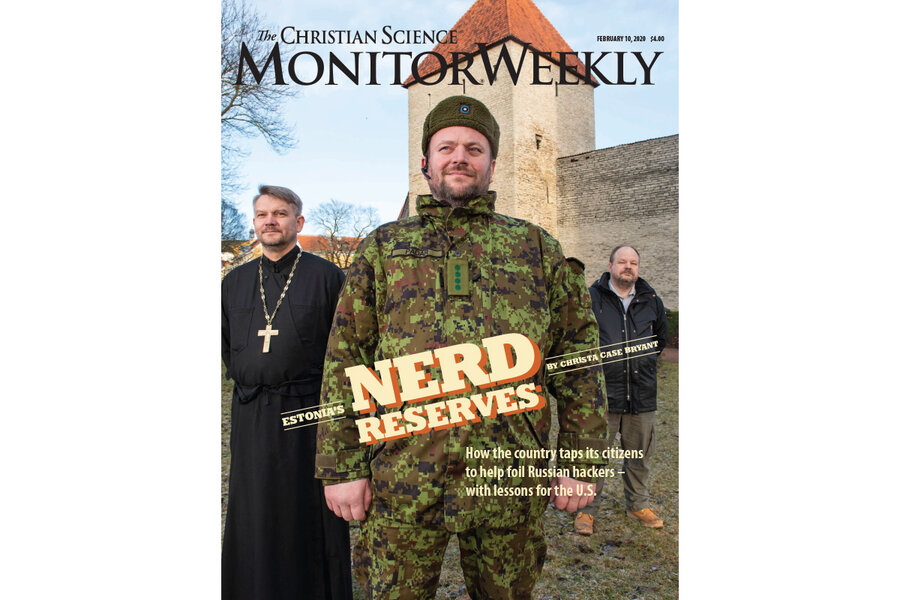Readers write: Regional names, collective nouns, and moral injury
Loading...
Regional names and hogs
I learn so much from Melissa Mohr’s column in the Monitor Weekly. She may like to know that in the January 2020 issue of the Missouri Conservationist, an article about feral hogs in the Missouri Ozarks reads, “MDC and its partners continue to focus efforts on trapping entire sounders, or groups of hogs, at one time.” Add that to the collection of collective nouns.
Also, I have been interested in the Ozark naming practice of making adjectives out of environmental nouns. For instance, we have Clifty Creek (not Cliff Creek), Piney River (both Little and Big Piney Rivers at Fort Leonard Wood) and Piney Mountain, Caney Creek, Brushy Creek and Brushy Knoll, Rocky Creek (not Rock Creek as it’s often seen elsewhere), Grassy Hollow and Lake, Cavey Hollow (for a valley with multiple caves), and Woody Ridge (not Wood Ridge).
Douglas County is regularly referred to as “wooly” or “woolly” country for its thickness of brambles, sumac, poison ivy, brush, stunted trees, etc. I can circumscribe that part of Missouri with such terms. Such features were named, of course, by the early settlers from Kentucky, Tennessee, and western Virginia. By the way, we have no stones in the Ozarks, only rocks. I’ve never heard of a stone wall, only rock wall.
Walter A. Schroeder
Columbia, Missouri
Collective nouns
As each issue of the Monitor Weekly arrives, I look forward to reading Melissa Mohr’s column. Just about the time I read “A ‘murder of crows’ and other collective nouns” in the Nov. 18, 2019, issue, three sets of family members – my children and a grandson – visited me within a 10-day period, with only a one-day overlap between two of them. After they’d all left I felt I’d had a “flurry of family.” Delightful!
Elisabeth Seaman
Mountain View, California
Bird migrations
The Dec. 9, 2019, Monitor Weekly included two fine letters of appreciation for Ms. Mohr’s columns on collective nouns. But neither mentioned the corroborative photo spread on page 4 of the Nov. 18, 2019, issue titled “A murmuration of starlings.” Bingo!
Oliver Hirsh
Klippinge, Denmark
Moral injury
Thank you for the Dec. 2, 2019, Monitor Weekly cover story, “Healing the moral injury of war.” This subject has been much neglected, unfortunately. I find it ironic that some of the most touching things I read about duty to God versus duty to country are in military publications.
John Stettler
Dallas





